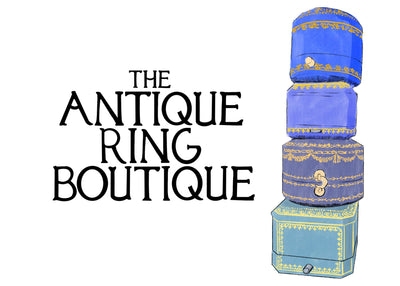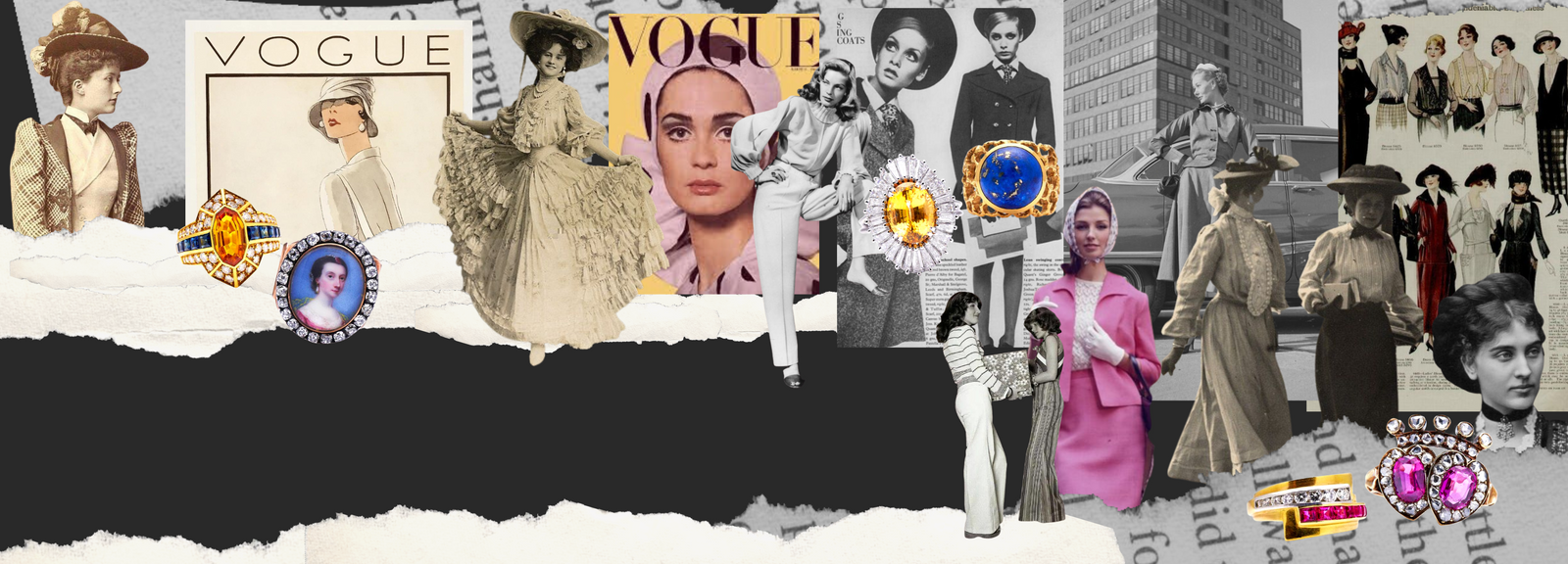ANTIQUE
The word ‘antique’ comes from ancient French and simply means old. Antique rings are classified as at least 100 years old, therefore anything made prior to 1920 would be considered antique. The term ‘antique’ can also refer to a ring's style or design. Nowadays the antique look is very popular and often mimicked by modern jewellers- especially in the market of engagement rings. It is important for this reason to properly determine the age of your ring so you have the necessary information to care for it. All of our rings are either true antique or true vintage. Rings over approximately 1,500 years old, for example from the ancient Greek, Roman or Egyptian eras, are classified as ancient rings.

How do I know if it is Antique?
Jewellery stamps and hallmarks are a great way to determine whether a ring is truly antique. Not every ring is hallmarked, so don't give up hope if you can't find one. It is a great practice to take the ring to a trusted jewellery specialist and have their value analysed for you. The design and craftsmanship say a lot about a ring and can often help determine its age. This is because of the differences in the way we used to produce jewellery versus the advanced machinery we use to produce jewellery and cut gems nowadays. Antique jewellery favoured the motifs of the Georgian, Victorian and Edwardian eras.

VINTAGE

How do I know if it is Vintage?
To authenticate your ring, it is best to only purchase from a certified antique or vintage jeweller, they will often provide you with documentation to validate the ring's authenticity and trace its history. Alternatively, you can have the ring valued and inspected by a trusted antique jewellery specialist. There are also a few things you can look out for. Soft signs of wear or natural patina are indications of age. The quality, cut, shape, and wear of the stones can all also help verify age. Because of changes in how diamonds have been valued, older stones may have warmer colour tones than modern gems.
Trade markings or maker's marks can also provide a great amount of information about a ring. The craftsmanship of a ring can also tell you a lot about its history, as well as the shape and cut of stones. Vintage or antique rings were often made by hand and therefore lack the precise cut of the laser machines we use nowadays. In times of uncertainty, the best way to classify an authentic vintage ring is with the help of its markings, or the knowledge of a jewellery specialist.
Vintage rings often have an Art Deco flair. Heavily inspired by the industrialisation that was happening at them time, geometric designs are common however, they also have a certain glamour and exuberance about them.

~
RETRO
‘Retro’ refers to Recent Nostalgia From The 1960s-90s. The term comes from the french word ‘rétro’, meaning to move backwards. Any item at least 15 years old can be referred to as retro. However, similar to the terms ‘antique’ & ‘vintage’ people also refer to things as retro if they evoke a vibrant mod or maximalist style that encompasses the period.

How do I know if it is Retro?
Within the jewellery industry, retro refers to pieces created in the late 1930s and 1940s. The best way to identify retro pieces is by examination! During this period jewellery designers and craftsmen were larger inspired by the changes that accompanied WWII. The retro era followed the Art Deco period of jewellery and design It was hugely inspired by the geometric flair of Art Deco, the rounded and organic designs of Art Nouveau, as well as the floral motifs of the Victorian age. It was consciously derivative or imitative of trends, techniques or attitudes of the recent past all while being influenced by the turbulent world of the 1940s and early 1950s.
Retro jewellery favoured yellow and rose or green gold alloys, as well as copper and palladium. Jewellers began to utilise synthetic, or lab-made gemstones instead of naturally occurring ones, as many gem mines closed. Brooches were a popular accessory for women who joined the workforce and clip-on earrings were all the rage! since resources were so scarce, Multi-use jewellery was exceptionally popular as it gave a variety of looks for a minimal price.


